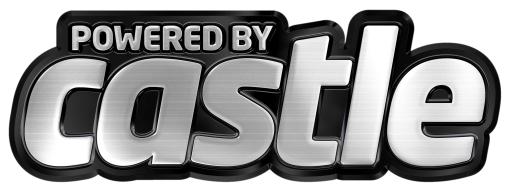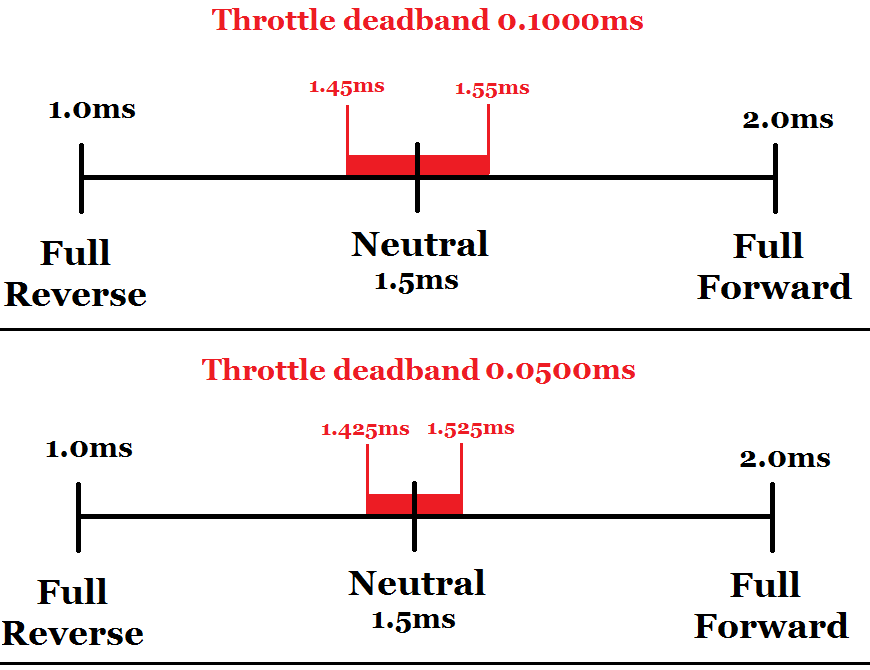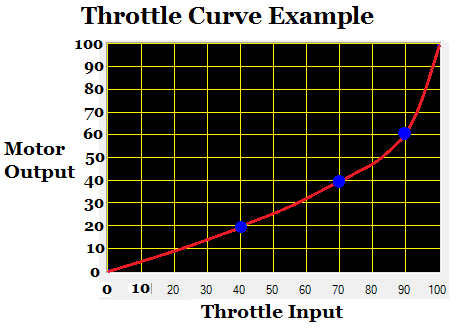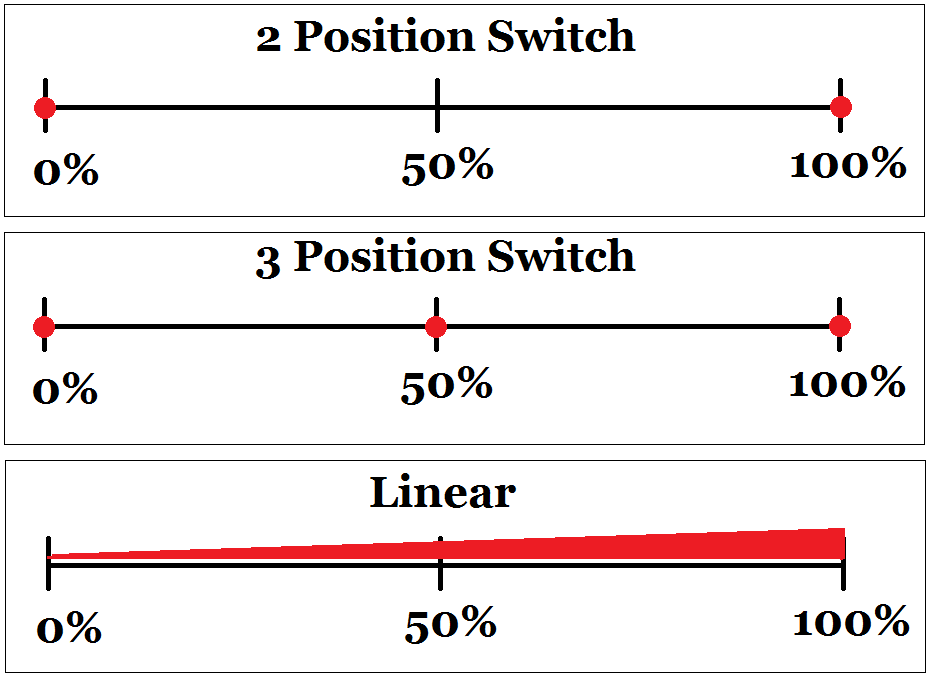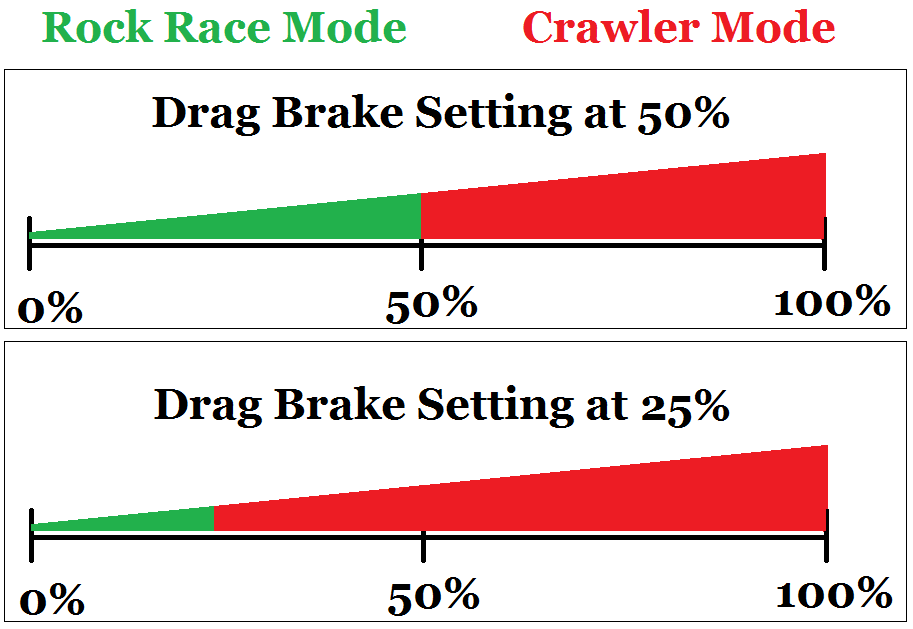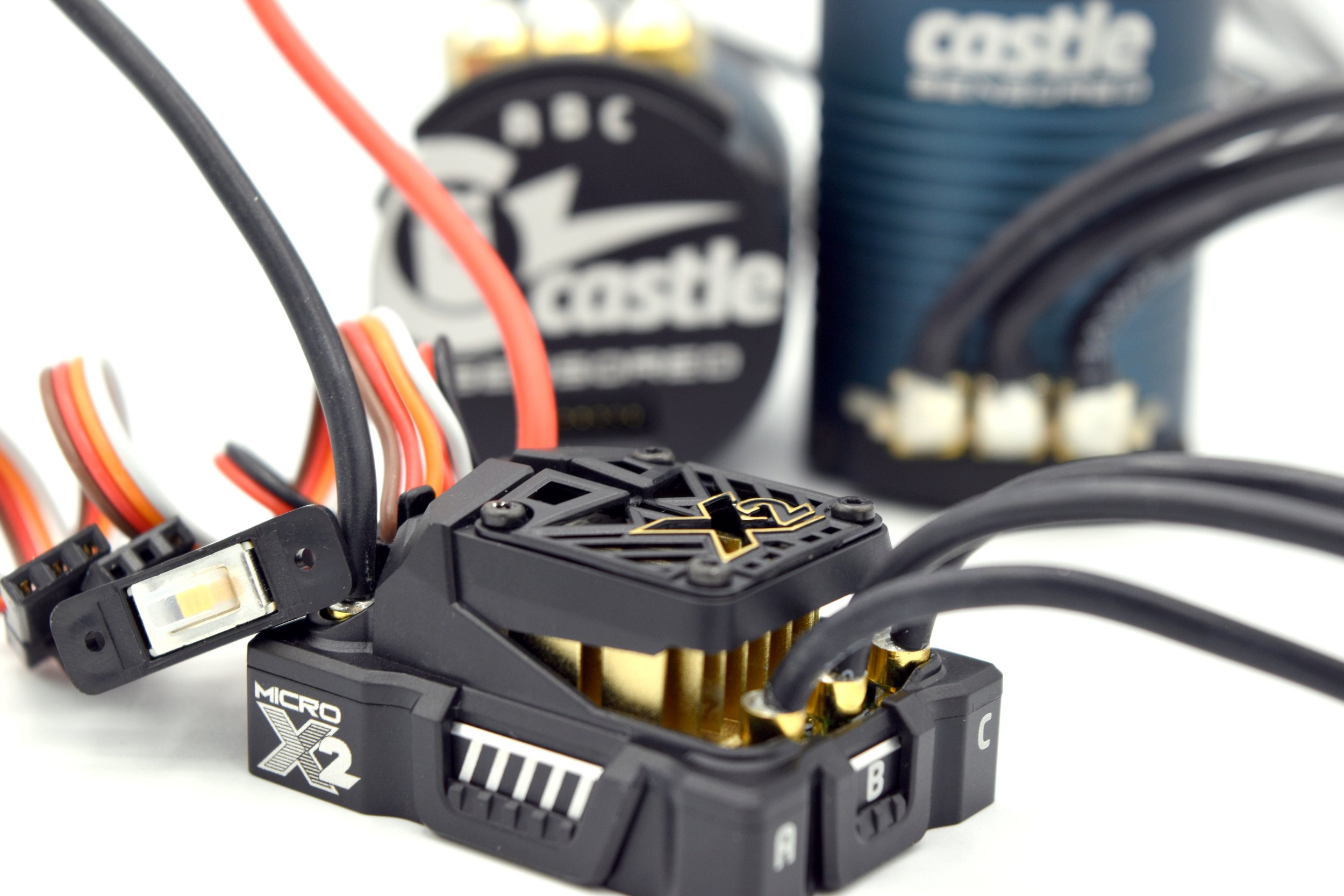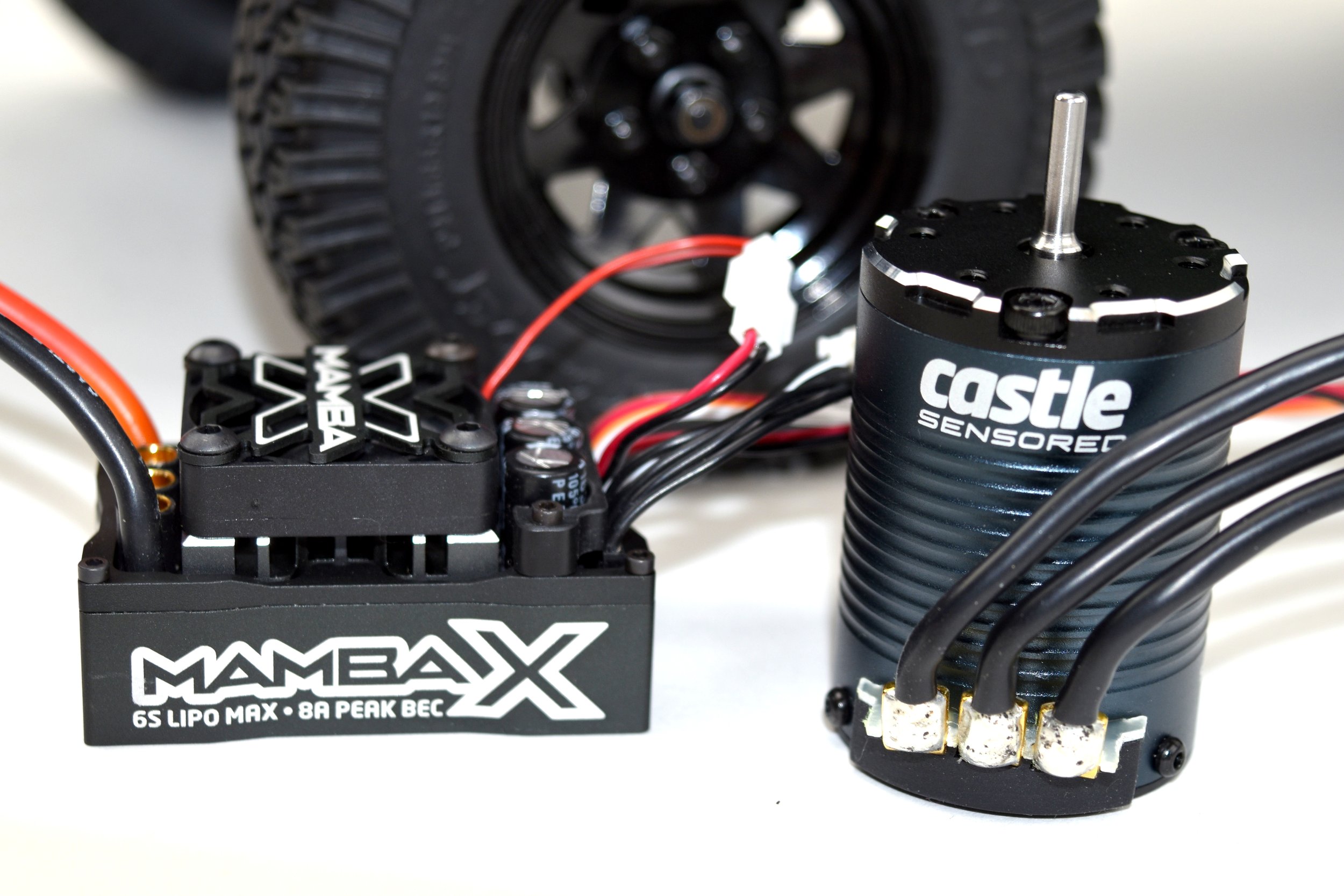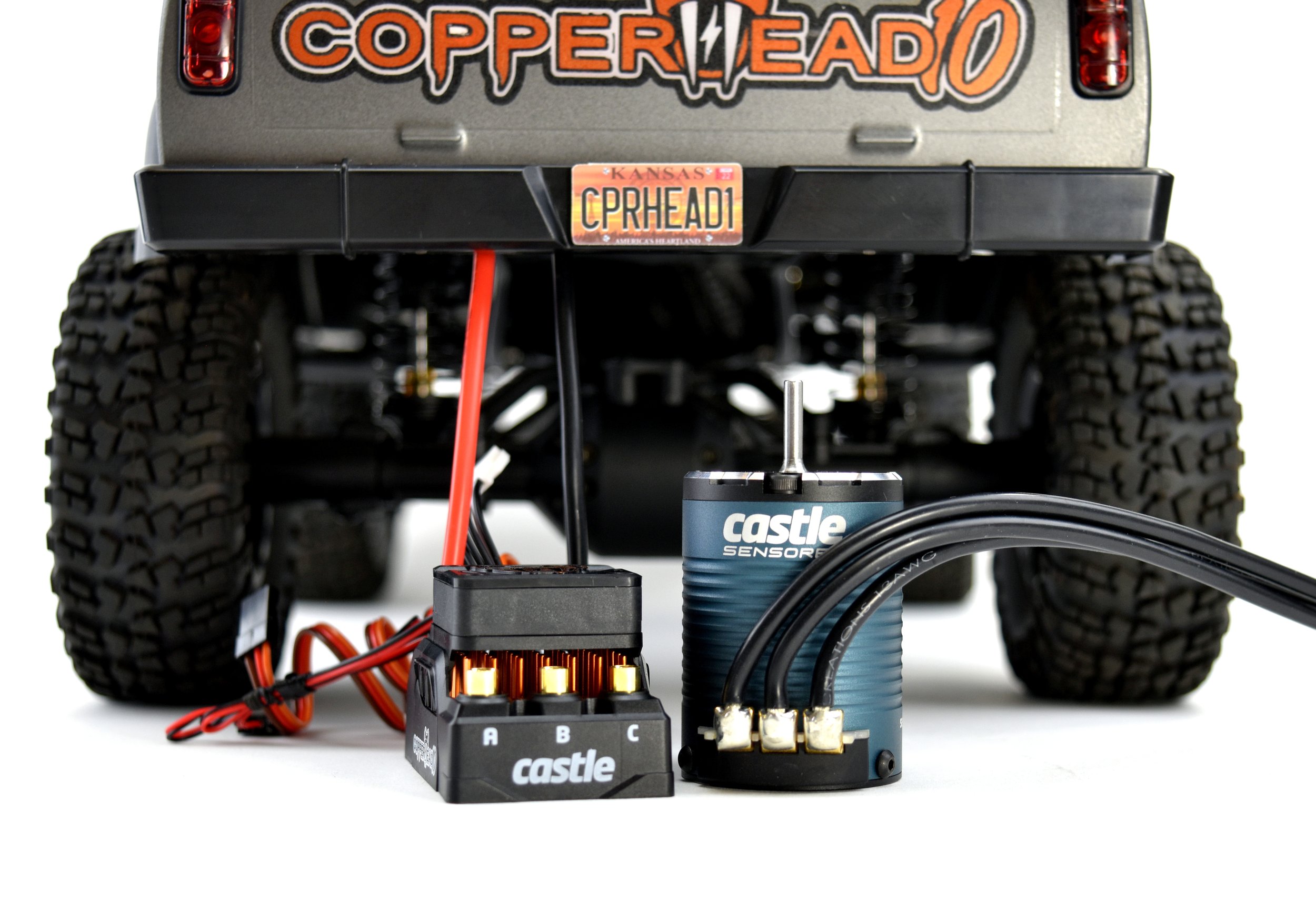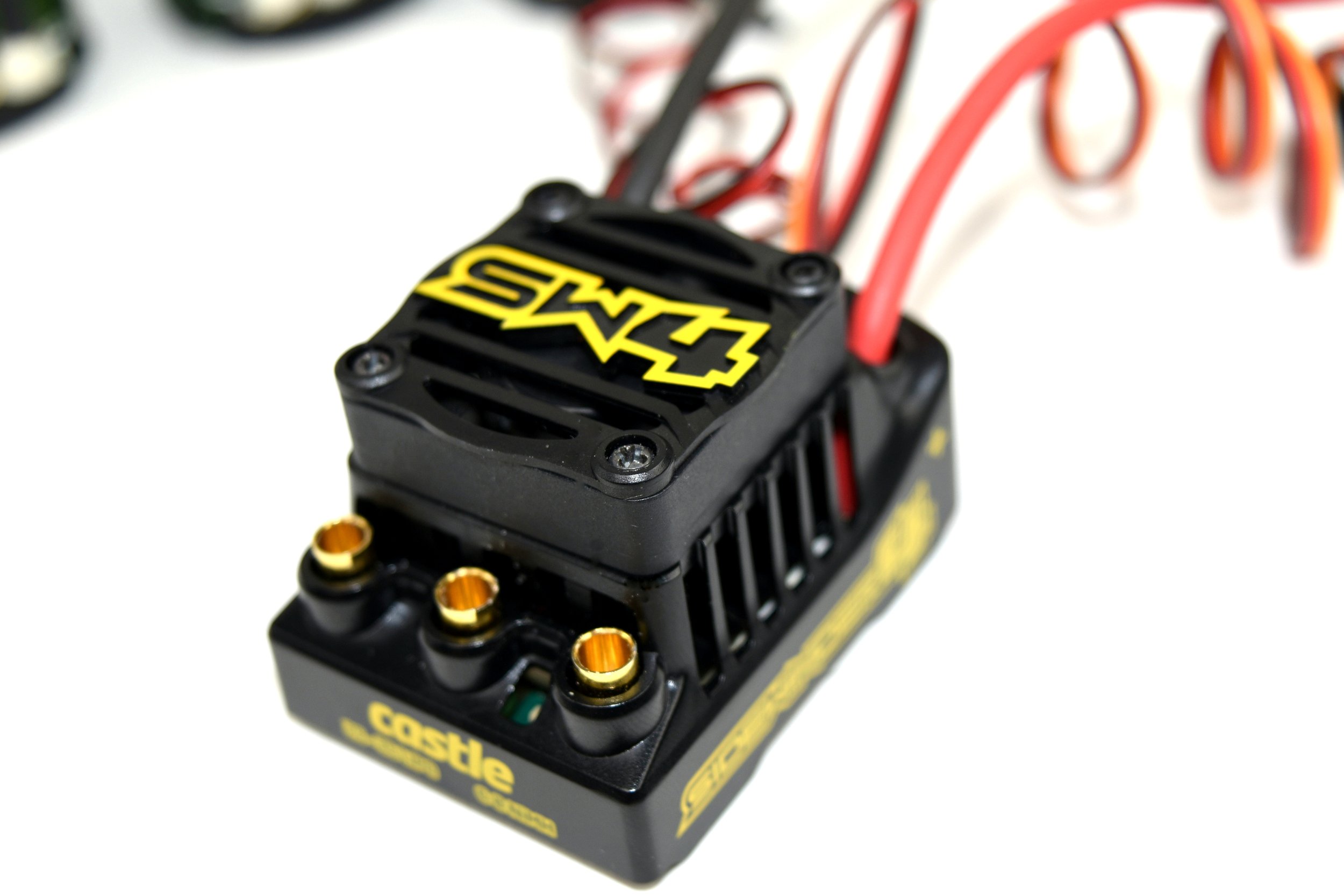Castle ESC Tuning for Crawlers
Castle controllers are extremely simple to set up and optimize for your application. Many users may simply plug the controller into their motor, radio, and battery and run it immediately. Advanced users may wish to access the incredible tuning features using the Castle Link software. We will begin with an overview of options for updating settings (or firmware), following with an explanation of each setting under the Castle Link Menu: Basic, Motor, Brake, Throttle , Power, and Advanced. Last, we’ll take a look at the Auxiliary Wire mode and its functionality.
OPTIONS FOR CHANGING ESC SETTINGS
Manual Programming - Uses the throttle trigger and beeps from the ESC to answer a series of yes and no questions. Most limited out of all of the options, but is built right into the ESC. You can find manual programming instructions in the “Drivers Ed Guide” for each ESC. (Click here for the Mamba X series instructions, page 27)
Field Programming Card - Hand held card with series of LEDs. Allows for slightly more options than manual; not compatible with most newer ESCs. Also works as a Castle Link USB adapter.
B-Link Bluetooth Adapter - Connects between the ESC and receiver, gets power from the ESC’s BEC. Allows access to every ESC setting; limited data log viewing. Adapter purchase required, Castle Link App is free to download for Android and iOS.
Castle Link USB Adapter - USB dongle for Windows PC. Allow access to every setting on the ESC. This is the best way to view data logs. Several Castle ESC’s come with a coupon to order a FREE Castle Link.
Programming options for Castle ESC’s: Transmitter, Field Programmer, B-Link Adapter and Castle Link.
BASIC SETTINGS
Any setting with * designates use within the Auxiliary Wire Mode.
Cutoff Voltage - Designed to protect LiPo batteries from over discharge. Default is “Auto-LiPo”; this feature will automatically detect the number of LiPo cells and sets the cutoff voltage accordingly. When using NiMH batteries, set to Disabled. It can also be set to a specific cutoff voltage, useful if using LiFe batteries.
Auto-LiPo Volts Per Cell - If the Cutoff Voltage is set to “Auto LiPo”, this sets the voltage at which the ESC will cutoff. Higher voltages will shorten run time, but reduce strain on the battery. Setting too low of a cutoff can shorten the life expectancy of the battery. Default is 3.2v per cell.
BEC Voltage - Set the output voltage of the ESC’s internal BEC. Default is 5.5v for most ESCs. Use caution when setting BEC voltage above 6 volts. Make sure all components powered by the BEC are rated above 6v, IE servos, receiver, lights, etc.
MOTOR SETTINGS
Motor Direction - Pretty straight forward. Changes the direction the motor spins when applying throttle. Necessary when needing to change the direction of a sensored brushless motor.
Motor Type - Changes the ESC’s output for the motor type. SmartSense is a hybrid mode; uses sensors to get smooth start-up (if available) and switches to sensorless; this allows the motor to run more efficiently. Sensored Only forces the ESC to use the sensors the entire time; this causes higher temperatures and shorter run times. Brushed Motor allows you to use, well, a brushed motor.
Enable Sensor Lost Warning - If there is a bad sensor connection between the ESC and motor, the ESC will generate the Sensor Lost Warning (short-short-short). Usually caused by moisture, bad wiring or rarely a bad sensor board. If you like running the trails and waterways when it’s wet and muddy, this is highly recommended! You might also take a look at this document that covers how to maintain Castle sensored motors in wet conditions.
Sensorless Motor Timing - Changes the electrical timing between the motor and ESC. Higher timing can increase motor RPM and torque; but can cause the ESC and motor to run hotter. If you are partial to running an inrunner in your crawler setup (2-pole & 4-pole), the default Normal (10) is recommended. For outrunners, High (15) or Highest (20) is recommended.
Motor Temperature Cutoff - Allows the ESC to shut down the motor at a defined temperature. Prevents damage to the motors magnets. Disabled by default, 180° F - 190° F is recommended. This feature only works with sensored motors with the sensor wire connected. Since typical crawling and trail running is geared towards lower RPMs this feature is not commonly used in crawler/trail setups.
CHEAT Mode - Boosts the electrical timing of the motor. Increase motor RPM, but causes the motor to run hotter and reduces run time. Can only be used if the Motor Type is set to “Sensored Only”. This setting is not recommended for crawling, trail running or general bashing, it can have limited use on tracks and drag racing.
BRAKE SETTINGS
*Brake Amount - Applied when going from forward to reverse. Not used when Reverse Type is set to Crawler Reverse. There is no brake from reverse to forward.
*Drag Brake - Brake applied when throttle is at neutral. Set to 100% the motor will hold the vehicle on an incline. Not recommended to run more than ~20% if trail running.
Drag Brake Ramp - Affects how quickly the drag brake engages when you go to neutral. Default is “disabled (instantaneous), the ESC immediately applies the drag brake to the set percentage. “Medium” or “Slow” is recommended if running above 50% drag brake.
THROTTLE SETTINGS
*Reverse Type - Affects how the ESC reacts when the reverse trigger is applied. Default is “With Reverse” - When going from forward to reverse, the ESC engages the brake; go to neutral for 2 seconds, before pressing the reverse trigger again to run the motor in reverse. “Crawler Reverse” causes the ESC to instantly go into reverse while going from forward to reverse on the trigger and is the typical setting for crawling/trail setups.
Throttle Deadband - Affects the “window” that the ESC sees as neutral. A larger deadband will create a dead spot in the trigger. When you slowly apply throttle the ESC will still consider it to be neutral. A smaller value reduces that window and allows the ESC to react sooner on the trigger position. (See Throttle Deadband illustration below)
Throttle Deadband Example
Throttle Curve - Changes how the throttle input signal affects the motor output in forward. Default is linear (ex at 50% throttle trigger, the motor will run at 50% output. Curve to lower right hand corner for better low end control. (See Throttle Curve illustration below)
Throttle Curve Example
Brake/Reverse Curve - Changes how the reverse input signal affects the motor output in reverse, as well as the brake strength. Default is linear (ex at 50% throttle trigger, the motor will run at 50% output).
POWER SETTINGS
*Max Power - Sets the maximum forward speed that ESC allows the motor to run. It’s not recommended to go below 70%. It also affects the reverse speed; the reverse percentage is that percentage of the max power.
*Reverse Percentage - Affects the speed of the motor in reverse. It is a percentage of the Max Power setting. IE if Max Power is set to 80% and reverse percentage is set to 50%, then reverse speed will be 40% of overall speed. If Max Power was at 100%, then reverse percentage would be 50% of overall speed.
Punch Control - Delays the initial hit of power off the line. Primarily used when accelerating hard from a stop. Higher percentages result in soft launches. Not really useful for crawling.
Torque Limit - Sets a maximum amount of power the motor is allowed to pull. Essentially a ceiling that the ESC will cap motor power. Lower values result in lower maximum power levels. Not typically useful for crawling or trail running.
ADVANCED SETTINGS
Arming Time - How long the ESC waits after power-up to attempt to arm. Can be helpful to increase to 5s with AVC capable Spektrum receivers; they can take 3-5 seconds to initialize on power-up.
Disable Idle Beeps - Disables the single beep that occurs every 10 seconds at neutral. Personal preference.
Disable Error Beeps - Disables the audible beeps that occur if there’s an error code. The red LED will still flash the beep sequence if the beeps are disabled.
Link Live Enable - Used for a limited number of telemetry supported radios. Allows the ESC to transmit telemetry data back to the receiver. Supported on some Futaba and Spektrum transmitters; Telemetry Link hardware is required.
AUXILIARY WIRE MODE
Auxiliary Functionality
There is a single white wire on Mamba X-Series ESCs. It connects to an auxiliary channel on your receiver; this can be assigned to a switch or dial on the transmitter. It can manipulate one of the ESC settings below, in real time, using the aux signal.
Max Power Adjustment - Adjusts the max speed percentage; also affects reverse. Not generally used as the endpoints/travel on the TX can serve the same function.
Reverse Percentage Adjustment - Adjusts just the reverse speed. Not super useful in many applications; like Max Power Adjustment, you can just modify the endpoints/travel on the RX.
Drag Brake Adjustment - Allows you to adjust the drag brake (neutral brake) in real time. 1.1ms input signal to aux wire = 0% drag brake; 1.9ms input to aux wire = 100% drag brake. (See Drag Brake Adjust Illustration below)
Drag Brake Adjust Illustration
Rock Race / Crawler Mode - Adjusts both drag brake percentage AND reverse type. Allows you to have “Crawler Reverse” (instant reverse) with high drag brake values and “With Reverse” (reverse lockout) with lower drag brake percentages. The drag brake in the ESC changes the same way as the “Drag Brake Adjustment” aux wire option. You set the transition point between Crawler and Rock race mode by adjusting the drag brake setting. This is the most common setting used in crawling/trail environments. (See Rock Race/Crawler Mode Illustration below)
Rock Race/Crawler Mode Illustration
The video below also describes and shows instructions on how to enable the Rock Race/Crawler Mode for X-Series ESCs.
Auxiliary Wire Mode: Rock Race/Crawler Mode
Torque Control Adjustment - The torque control is scaled from 0.1 at 1.1ms signal received on the AUX wire to 5.0 at 1.9ms. Torque control is disabled when the input exceeds 1.9ms. If the AUX wire becomes disconnected, the controller will use the torque limit set in Castle Link. Typically not used in crawler setups.
Idle Datalog Erase - The controller will clear its data log when the AUX wire signal quickly alternates between greater and less than 50% (1.5ms) for a few seconds. This will only occur while the controller is idling. Typically not utilized in crawler setups.
Reverse Enable/Disable - Reversing is disabled when the AUX wire receives a signal above 50% (>1.5ms). When the controller receives an AUX wire signal below 50% or the cable becomes disconnected, reverse capability is enabled. Typically not utilized in crawler setups.
A lot of the ESC programming parameters come down to personal preference, and there is absolutely nothing wrong with that. If you have any questions or want to share your settings profile - drop us a note below!
CASTLE ESC’S FOR CRAWLING/TRAILS
